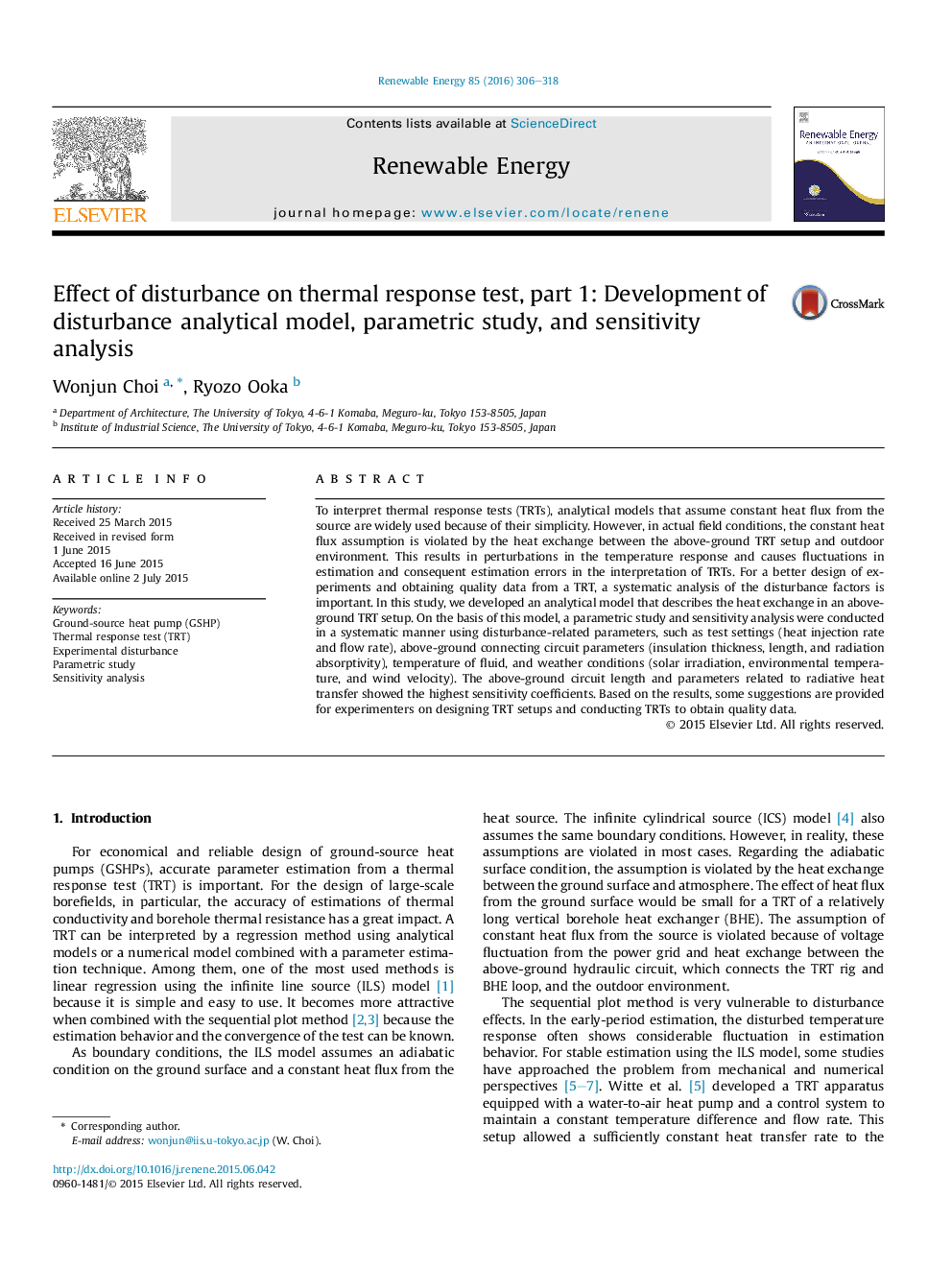| Article ID | Journal | Published Year | Pages | File Type |
|---|---|---|---|---|
| 6766526 | Renewable Energy | 2016 | 13 Pages |
Abstract
To interpret thermal response tests (TRTs), analytical models that assume constant heat flux from the source are widely used because of their simplicity. However, in actual field conditions, the constant heat flux assumption is violated by the heat exchange between the above-ground TRT setup and outdoor environment. This results in perturbations in the temperature response and causes fluctuations in estimation and consequent estimation errors in the interpretation of TRTs. For a better design of experiments and obtaining quality data from a TRT, a systematic analysis of the disturbance factors is important. In this study, we developed an analytical model that describes the heat exchange in an above-ground TRT setup. On the basis of this model, a parametric study and sensitivity analysis were conducted in a systematic manner using disturbance-related parameters, such as test settings (heat injection rate and flow rate), above-ground connecting circuit parameters (insulation thickness, length, and radiation absorptivity), temperature of fluid, and weather conditions (solar irradiation, environmental temperature, and wind velocity). The above-ground circuit length and parameters related to radiative heat transfer showed the highest sensitivity coefficients. Based on the results, some suggestions are provided for experimenters on designing TRT setups and conducting TRTs to obtain quality data.
Keywords
Related Topics
Physical Sciences and Engineering
Energy
Renewable Energy, Sustainability and the Environment
Authors
Wonjun Choi, Ryozo Ooka,
